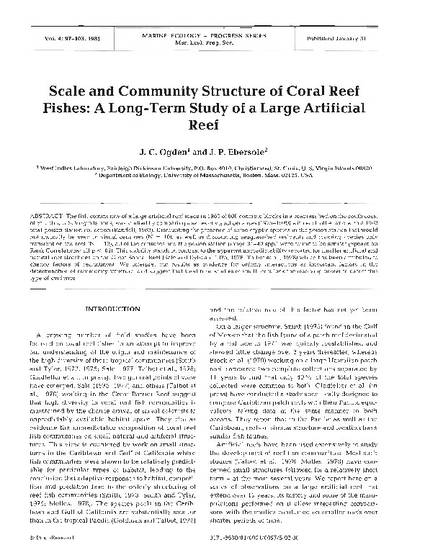
he fish community of a large artificial reef made In 1960 of 800 concrete blocks in a seagrass bed on the south coast of St. John, U.S. Virgin Islands, was studied by comparing a series of visual censuses (1975-1979) with each other and with a 1962 total-poison station collection (Randall, 1963). Discounting the presence of some cryptic species in the poison station that would not normally be seen in visual censuses (N = 10), as well as discounting seagrass-bed residents and roaming species only transient on the reef (N = 13), all of the censuses and the poison station (range 31-40 spp.) were found to be similar (Spearman Rank Correlations: all p C .01). This stability stands in contrast to the apparent unpredictability reported for smaller artificial and natural reef structures on the Great Barrier Reef (Sale and Dybdahl 1975, 1978; Talbot et al., 1978) which has been attributed to chance factors of recruitment. We interpret our results as evidence for orderly Interactions as important factors in the determination of community structure, and suggest that short-tern~ studies of small reefs lack the resolving power to detect this type of evidence.
Marine Ecology Progress Series, v. 4, p. 97-103
© Inter-Research
Link to the publisher: https://www.int-res.com/abstracts/meps/v4/
Available at: http://works.bepress.com/john-ogden/62/